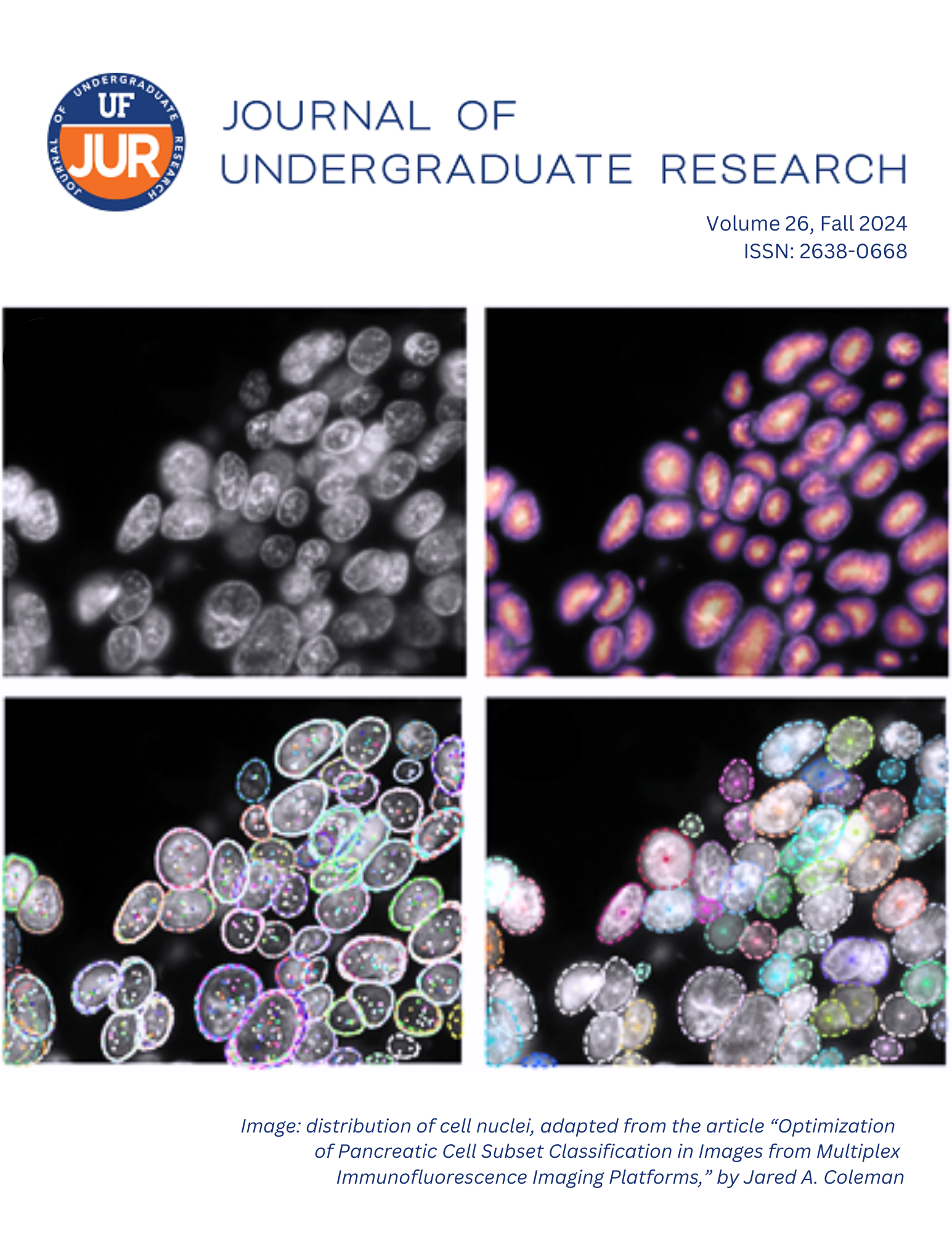Optimization of Pancreatic Cell Subset Classification in Images from Multiplex Immunofluorescence Imaging Platforms
DOI:
https://doi.org/10.32473/ufjur.26.135624Keywords:
endocrine, multiplex imaging, pancreas, cell classification, type 1 diabetesAbstract
Understanding the natural history of type 1 diabetes (T1D) has been hampered by limited access to the target organ (i.e., the pancreas) in living people. To make the most of these precious tissues, cyclic imaging platforms such as Miltenyi MACSima, which increase the number of markers that can be examined per section, are becoming increasingly popular. Such advances in spatial biology require reproducible cell classification algorithms. Random Tree (RT) algorithm was previously found to be the most reliable approach for differentiating exocrine versus endocrine pancreas compartments, yet an unmet need exists for an approach that can provide accurate cell type classification within the endocrine compartment. It was hypothesized that a core set of markers could be used to maximize classification accuracy. To this end, pancreatic sections were stained with fluorescent antibodies against various markers and images were captured using the MACSima platform. RT algorithm was trained in QuPath to classify endocrine, exocrine, and vascular cell clusters in n=3 pancreas donors across a total of n=10 ROIs. Classification accuracy will be determined by comparison to ground-truth labels annotated by an expert in the field. Markers that maximize classification accuracy will be included on future pancreas runs to standardize and streamline downstream analyses.
Downloads
Published
Issue
Section
License
Copyright (c) 2024 Jared Coleman

This work is licensed under a Creative Commons Attribution-NonCommercial 4.0 International License.
Some journals stipulate that submitted articles cannot be under consideration for publication or published in another journal. The student-author and mentor have the option of determining which journal the paper will be submitted to first. UF JUR accepts papers that have been published in other journals or might be published in the future. It is the responsibility of the student-author and mentor to determine whether another journal will accept a paper that has been published in UF JUR.

